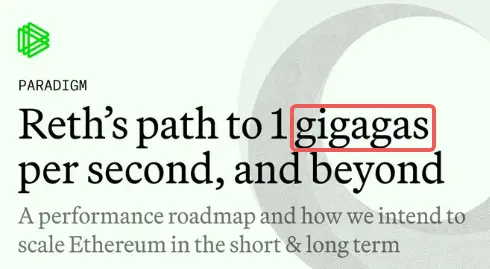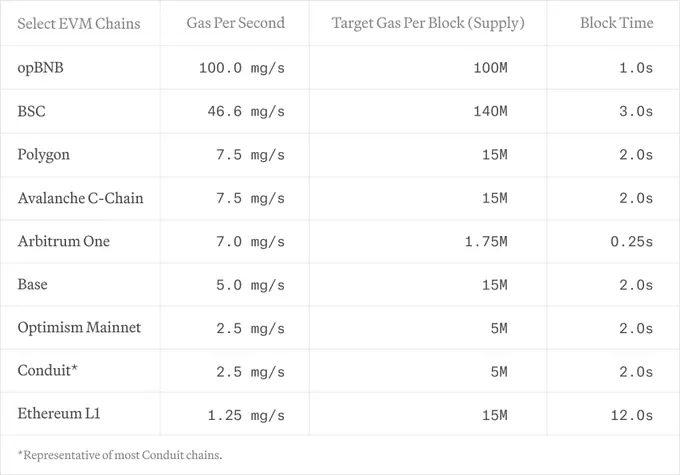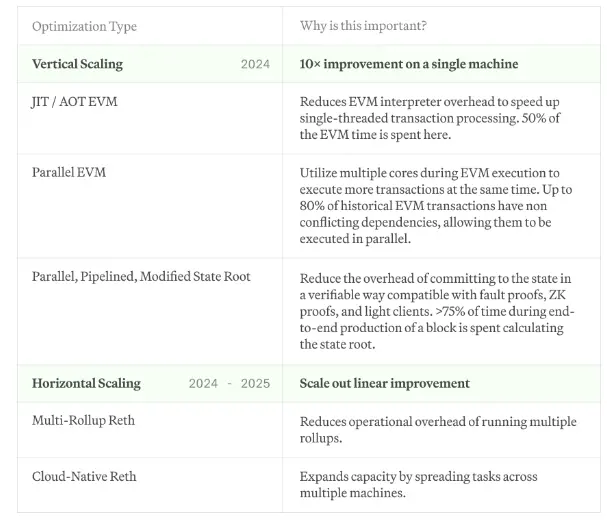Interpreting gigagas: The wordsmith Paradigm presents another new concept. Will it lead to the emergence of a new narrative?
Author: Deep Tide TechFlow
Questioning narratives, understanding narratives, and becoming narratives are the classic three steps in crypto hype.
However, the emergence of a narrative often initially stems from some lofty terms, such as intent, modularization, parallelization… They sound brief and powerful, leaving people somewhat confused — this is the kind of sexy technical perception that is desired.
But if you ask where these terms come from, top VC Paradigm must deserve the supreme title of "wordsmith."
In July last year, Paradigm introduced the top ten trends it was focusing on, among which the concept of intent-centric was mentioned for the first time.
Thus, the concept of intent quickly became popular, with projects flocking to the buzzword, packaging the ordinary appeal of "making user experience better" so wonderfully with just the word "intent"; intent-based XX protocols also became a must-have footnote in the Twitter bios of new projects.
Recently, the wordsmith Paradigm struck again, as its CTO published an article titled "Reth's path to 1 gigagas per second, and Beyond," in which the keyword is naturally "gigagas."

Giga translates to a common unit of quantity, meaning billion or trillion; while gas is obviously the familiar gas fee.
But when the two words combine — billion gas?
Well, it still carries that familiar feeling of being brief, powerful, concise, somewhat confusing, and impressively vague.
From TPS to GPS, the New Standard of the Wordsmith
In fact, the newly proposed gigagas by Paradigm relates to blockchain performance.
Under conventional thinking, we measure the speed of a blockchain using TPS (transactions per second), which indicates the number of transactions that can be processed per second.
However, Paradigm's CTO believes that "gas consumed per second" (Gas Per Second, GPS) is a more precise measurement standard. This is because:
Measurement of computational workload: Gas is a unit that measures the computational workload required to execute operations (such as transactions or smart contracts), so GPS can more accurately reflect the amount of computation the network can handle per second.
Reflection of capacity and efficiency: Using GPS as a performance metric allows for a clearer understanding of a blockchain's capacity and efficiency, aiding in the assessment of system costs.
Defense against DOS attacks: Standardizing performance metrics to GPS can better guard against potential Denial of Service (DOS) attacks, which may exploit less precise measurements.
Cross-chain performance comparison: Using GPS helps compare the performance of different EVM-compatible chains, as different chains may have varying computational complexities in transaction processing.
Therefore, using GPS instead of TPS to measure blockchain performance is better, and Paradigm suggests that the EVM community adopt gas consumption per second as a standard metric, while combining other gas pricing dimensions to create a comprehensive performance standard.
According to Paradigm's thinking, if we comprehensively evaluate EVM network performance based on the amount of gas consumed per second while capturing computational and storage costs, the current mainstream L1 and L2 GPS rankings should look like this:

*Deep Tide Note: The data in the table mg refers to milligas, meaning "one-thousandth of gas." The larger the value, the greater the amount of computation the blockchain network can handle per second, indicating better performance. According to the table data, opBNB ranks highest among all listed networks.
This means that compared to other blockchain networks, opBNB can execute more computations and handle more or more complex transactions and smart contracts within a unit of time. However, performance assessment should also consider other factors, such as network security, decentralization level, and fee structure.
1 gigagas, VC's Own Infrastructure Rollout
However, what Paradigm aims to do goes far beyond the numbers in the table; they want to achieve GPS of 1 gigagas, meaning the blockchain can consume 1 billion units of gas per second.
Years ago, Paradigm began developing Reth, an Ethereum execution client using Rust.
Reth's goal is to optimize execution performance and increase the number of "gas" units that can be processed per second, thereby enhancing the overall performance of the Ethereum network.

From publicly available data in the article, Reth has already achieved 100-200MB gas per second (including sender recovery, executing transactions, and calculating each block's trie); thus, to reach the goal of 1 Gigagas per second, it needs to scale up by another 10 times.
Paradigm's proposed methods involve both vertical and horizontal scaling of their developed Reth.
As for how to scale specifically, this part is too technical for the average reader, so we have simplified it to quickly understand the gist of the matter.
Vertical scaling is like equipping a machine with a more powerful engine or adding more memory, enabling it to handle more workload. The main goal is to enhance the processing capacity of the existing server or node.
Specific methods Paradigm can think of include:
JIT/AOT EVM: By using Just-In-Time (JIT) or Ahead-Of-Time (AOT) compilation for the EVM, the overhead of the EVM interpreter is reduced, thus speeding up single-threaded transaction processing. It is claimed that execution time can be halved.
Parallel EVM: Utilizing multi-core processors to execute the EVM allows for more transactions to be executed simultaneously. Historically, up to 80% of EVM transactions have no conflicting dependencies and can be executed in parallel.
Parallelism, pipelining, modified state roots: This reduces the overhead when calculating state roots. State root calculations account for a significant portion of block time, over 75%, so optimizing this is a key step in significantly improving efficiency.

Horizontal scaling, on the other hand, is akin to adding more processing units to the system, similar to increasing production lines in a large factory. By adding more processing units to share the workload, the overall capacity of the system can be expanded without increasing the pressure on individual nodes.
Specific methods Paradigm can think of include:
Multiple Rollup Reth: This reduces the operational overhead when running multiple rollups, meaning multiple rollups can be launched within the same process, thereby minimizing the operational costs of running thousands of rollups.
Cloud-native Reth: By distributing tasks across multiple machines, capacity is expanded. This is similar to cloud computing architecture, allowing the system to automatically scale on demand, using cloud object storage to persist data.
It's okay if you don't understand these; we just need to grasp that the essence of this matter is:
Paradigm has developed an Ethereum client, proposed a new standard for measuring EVM performance, and aims to elevate this new standard (GPS) to 1 gigagas through various methods.
VCs are leading the infrastructure rollout and performance enhancement, ultimately achieving execution efficiency that is much faster than existing Ethereum and other EVM public chains, allowing the blockchain to consume more gas and execute more tasks within a unit of time, paving the way for large-scale applications on the chain.
From this, it can also be seen that Paradigm is not only investing money for others to build L1/L2 but is also putting resources into performance development, making multiple bets to improve infrastructure.
The Wordsmithing Never Stops, Customer Acquisition Has Yet to Begin
Clearly, gigagas is a more hardcore concept, far less accessible than intent, which anyone can dabble in.
Perhaps in the future, various L1/L2 will showcase their performance reaching 1 gigagas or even more; however, application layer projects may not be directly related to this term.
Yet in the current narrative-deficient environment, having one more concept also adds one more possibility for capturing attention.
Professor Pan also keenly pointed out that crypto wordsmithing needs to be easy to read, easy to understand, and original. From this perspective, gigagas meets all these conditions and indeed seems novel.

However, with so many L1/L2 already in existence, and so many new stories and concepts about performance emerging, where are the standout applications after all this competition?
Or is it that as long as the infrastructure is strong enough, applications will eventually emerge, so everyone should focus on building infrastructure first?
In the author's view, the importance of gigagas may not be as significant as gigauser (one billion users). Perhaps performance is a prerequisite for achieving user scale, but performance does not necessarily guarantee user acquisition.
The tangible enhancement of crypto products' experiences and the influx of users still have a long way to go.










